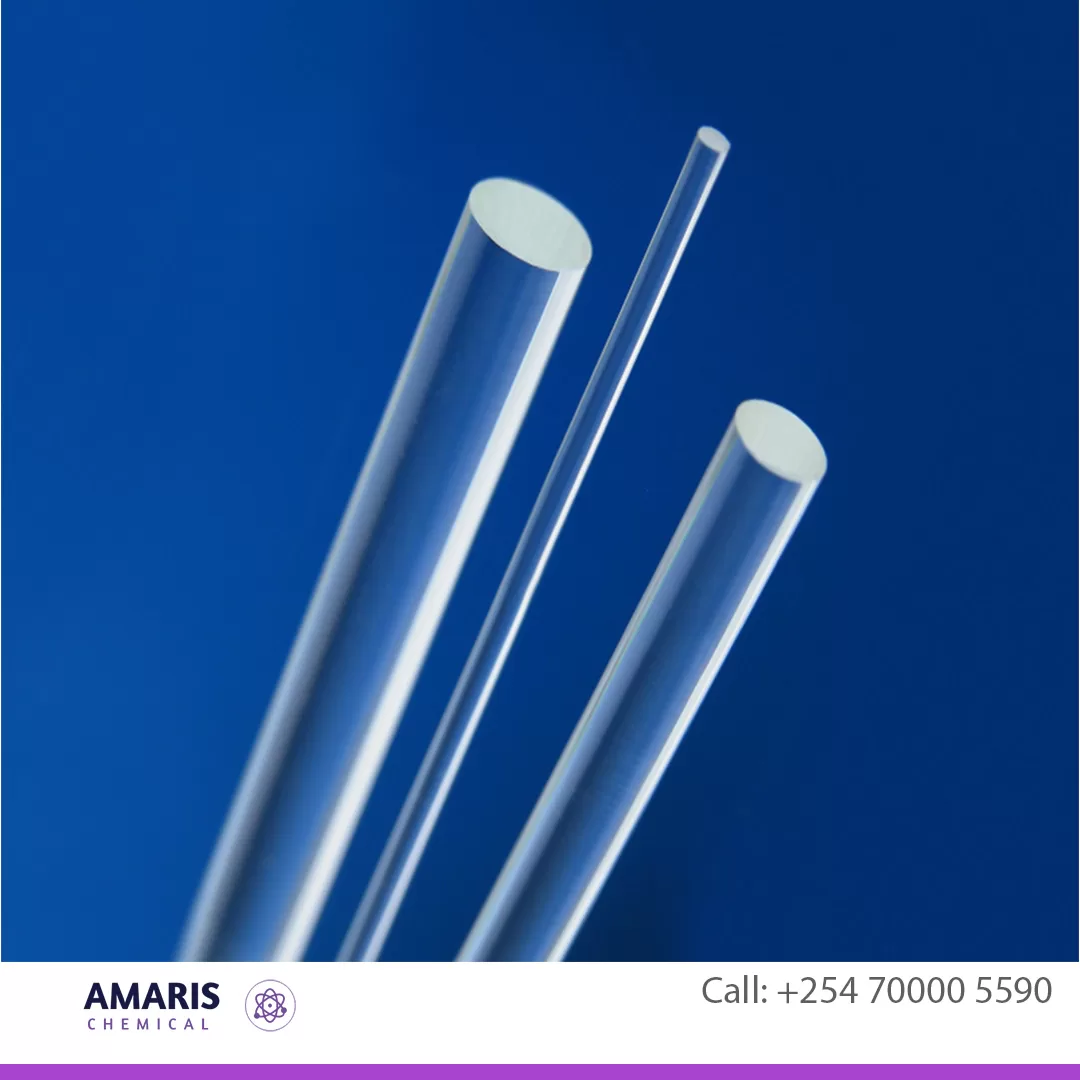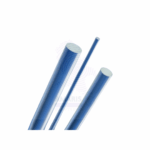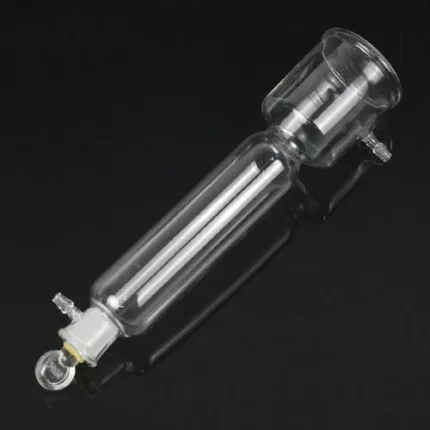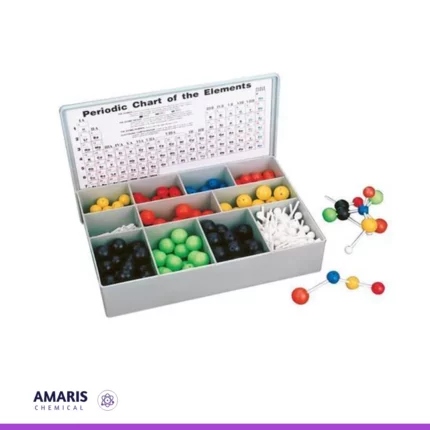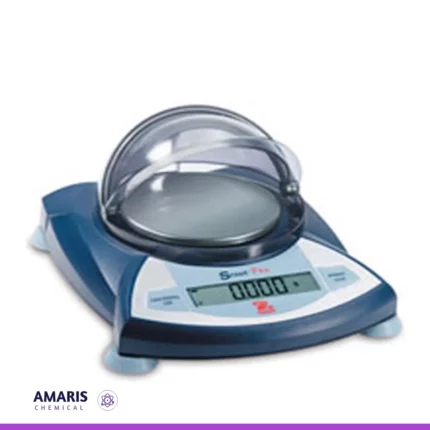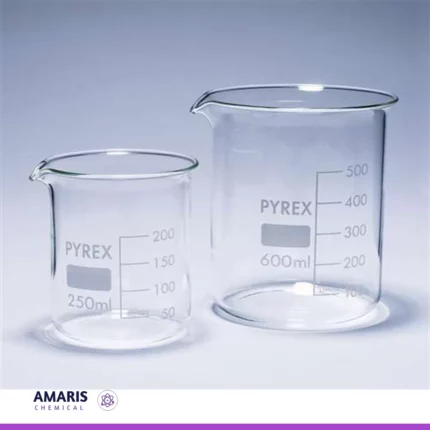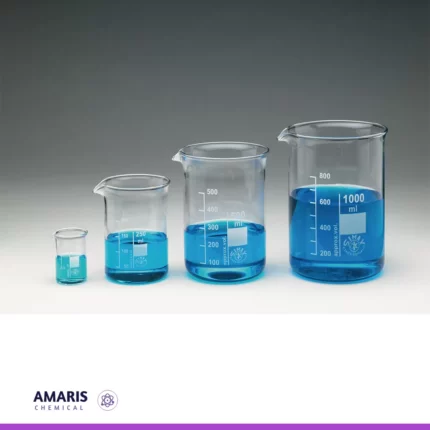“bare enamelled copper wire” has been added to your cart. View cart
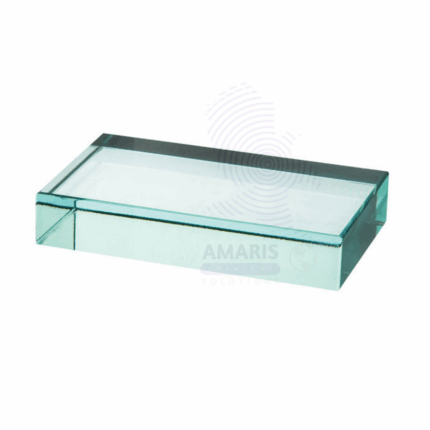
Rectangular Glass Block
$500.00 Original price was: $500.00.$400.00Current price is: $400.00.
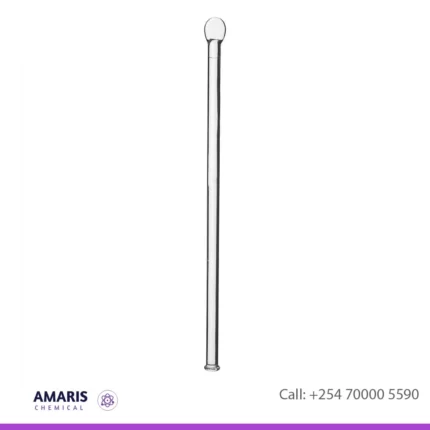
Glass Stirring Rod
$500.00 Original price was: $500.00.$450.00Current price is: $450.00.
Glass Rod for Static Electricity
$0.01
Whatsapp Order
A glass rod is a common tool used in physics experiments to demonstrate static electricity. Here’s how you can use a glass rod to generate static electricity and some of the principles behind it:
Materials Needed:
- Glass rod
- Silk cloth or piece of fur
- Neutral objects (e.g., small pieces of paper, aluminum foil, or a pith ball electroscope)
Steps to Generate Static Electricity:
- Preparation: Make sure the glass rod and the silk cloth are clean and dry. Moisture can hinder the process of generating static electricity.
- Rubbing the Glass Rod: Firmly rub the glass rod with the silk cloth or fur. This action transfers electrons from the glass rod to the silk cloth, leaving the glass rod positively charged due to the loss of electrons.
- Observation: Bring the positively charged glass rod close to neutral objects like small pieces of paper or an electroscope. You should observe the objects being attracted to the rod or the electroscope showing a deflection. This occurs because the neutral objects become polarized; the side closer to the rod becomes negatively charged, and the side further away becomes positively charged.
SKU:
ACS81737CHEM0
Category: LABORATORY EQUIPMENT & APPARATUS
Description
Table of Contents
ToggleUses of glass rod
1. Electrostatic Induction Demonstrations:
- Pith Ball Electroscope: When a charged glass rod is brought near a neutral pith ball electroscope, it can induce a charge in the pith ball, causing it to be attracted to the rod. This demonstrates the principles of electrostatic induction and the behavior of charges.
- Foil Electroscope: A glass rod can be used to show the deflection of foil leaves in an electroscope, indicating the presence of static charge and its magnitude.
2. Charge Transfer Experiments:
- Triboelectric Effect: By rubbing the glass rod with silk or fur, students can observe the transfer of electrons between materials, leading to an understanding of the triboelectric series and how different materials interact to produce static charges.
- Charging by Contact: A glass rod can be used to directly transfer charge to a conductive object by touching it, allowing students to see how objects can be charged by contact.
3. Coulomb’s Law Experiments:
- Measuring Electrostatic Force: By bringing a charged glass rod near another charged object, students can observe the repulsion or attraction forces, which can be used to study Coulomb’s law and the relationship between charge, distance, and force.
4. Polarization Demonstrations:
- Attraction of Neutral Objects: A charged glass rod can attract small neutral objects like paper bits or balloons, demonstrating the concept of charge polarization and the movement of electrons within a neutral object in response to an external charge.
5. Electric Field Mapping:
- Field Line Visualization: Using a charged glass rod, students can map the electric field lines by using small conductive test objects or light particles suspended in oil. This helps in visualizing how electric fields emanate from charged objects and the direction of force experienced by a positive test charge.
6. Capacitor Experiments:
- Charging and Discharging Capacitors: A glass rod can be used to charge a capacitor by transferring static electricity. This demonstrates how capacitors store and release electric charge and the concept of capacitance.
7. Static Electricity Applications:
- Precipitators and Dust Removal: Demonstrating the principle behind electrostatic precipitators, which use static charges to remove particles from the air. A charged glass rod can attract dust particles, illustrating how industrial electrostatic precipitators work.
8. Comparison of Material Properties:
- Testing Different Materials: By comparing the effects of rubbing different materials (other than silk) against the glass rod, students can explore the triboelectric series and understand which materials tend to gain or lose electrons more readily.
9. Electrostatic Painting:
- Simulating Industrial Processes: Using a charged glass rod to attract small particles to a surface can simulate the principles behind electrostatic painting, where charged paint particles are attracted to a surface, ensuring an even coat.
Related products
Absorption Tower
$0.01
A laboratory absorption tower is a scaled-down version of an industrial absorption tower used for experimental purposes within a laboratory setting. It is a specialized piece of lab apparatus designed to investigate the principles of gas-liquid absorption or scrubbing processes under controlled conditions.
Typically, a lab absorption tower consists of a glass or transparent column filled with a packing material or trays to facilitate the gas-liquid contact. It is equipped with inlet and outlet ports to introduce the gas stream and remove the treated gas after absorption. Additionally, there are ports or connections to introduce the liquid solvent and monitor its flow rate. The tower may also have temperature and pressure control mechanisms to simulate specific conditions relevant to the experiment.
Laboratory absorption towers are essential tools for researchers, chemists, and engineers to study the behavior of gases and liquids during absorption processes, optimize process parameters, and assess the efficiency of different solvents or packing materials. These experiments contribute to the development and improvement of industrial-scale absorption systems and help in solving environmental challenges related to air and gas pollution.
Aspirator Bottle Glass
A laboratory aspirator glass bottle, also known as a vacuum aspirator bottle or a vacuum filtration flask, is a specialized glass container used in scientific laboratories for various applications. It is designed to create a vacuum or negative pressure, which allows the filtration of liquids through a porous medium like a filter paper or a membrane.
The bottle typically has a conical or pear-shaped body with a sidearm or neck near the top. This neck is where a rubber or silicone stopper is inserted, allowing for the attachment of tubing or a hose to connect to a vacuum source or water aspirator. (Available in 2.5l,5l,10l,)
Laboratory aspirator glass bottles are commonly used in vacuum filtration processes to separate a solid precipitate from a liquid solution. When connected to a vacuum source, the air inside the bottle is removed, creating a pressure difference that draws the liquid through the filter, leaving the solid behind on the filter paper.
These bottles come in various sizes to accommodate different filtration needs and are an essential tool in many research, analytical, and quality control laboratories for tasks like separating particulate matter, sterilizing solutions, and performing various filtration techniques. They are often made of durable borosilicate glass to withstand the pressure changes and chemical interactions that may occur during laboratory operations.
Atomic Model Set
$0.01
A lab atomic model set is a collection of physical models and materials designed to represent the structure of atoms and molecules. It is commonly used in educational and scientific laboratory settings to visually demonstrate the arrangement of protons, neutrons, and electrons within an atom, as well as the bonding patterns between atoms in molecules. These sets typically include colored balls of various sizes representing different types of atoms, as well as connectors or magnets to simulate chemical bonds between them. The purpose of these sets is to help students and researchers better understand the principles of atomic and molecular structure in a tangible and interactive way.
Balance Bathroom Scale
$0.01
Barlows wheel apparatus
$0.01
The Barlow's wheel apparatus is an experimental device used to demonstrate the conversion of electrical energy into mechanical energy through electromagnetic principles. It consists of a horizontal wheel or disk with radial metal spokes attached to its center. The wheel is mounted on an axle, allowing it to rotate freely.
beaker pyrex
A glass beaker is a cylindrical, open-top container made of glass, typically with graduated volume markings on its side. It is commonly used in laboratories for holding, mixing, and heating liquids, as well as for performing various experiments and chemical reactions. Glass beakers come in various sizes and are designed to provide easy observation of the contents and to withstand temperature changes without significant deformation or chemical interaction with the substances being used.
Beaker Simax
$0.01
A glass beaker is a cylindrical, open-top container made of glass, typically with graduated volume markings on its side. It is commonly used in laboratories for holding, mixing, and heating liquids, as well as for performing various experiments and chemical reactions. Glass beakers come in various sizes and are designed to provide easy observation of the contents and to withstand temperature changes without significant deformation or chemical interaction with the substances being used.


 Emollients
Emollients Humectants
Humectants UV Filters
UV Filters Surfactants (cosmetic)
Surfactants (cosmetic) Preservatives (cosmetic)
Preservatives (cosmetic) Fragrances and Essential Oils
Fragrances and Essential Oils Antioxidants (cosmetics)
Antioxidants (cosmetics)
 Solvents (lab)
Solvents (lab) Chromatography Chemicals
Chromatography Chemicals Microbiology and Cell Culture Reagents
Microbiology and Cell Culture Reagents Biochemical Reagents
Biochemical Reagents Inorganic and Organic Standards
Inorganic and Organic Standards Spectroscopy Reagents
Spectroscopy Reagents Molecular Biology Reagents
Molecular Biology Reagents
 Precious Metal Extraction Agents
Precious Metal Extraction Agents
 Plasticizers
Plasticizers Polymerization Initiators
Polymerization Initiators Stabilizers
Stabilizers Monomers
Monomers Fillers and Reinforcements
Fillers and Reinforcements Antioxidants (plastics)
Antioxidants (plastics) Colorants (plastic pigments,Dyes)
Colorants (plastic pigments,Dyes)
 Fertilizers
Fertilizers Plant Growth Regulators
Plant Growth Regulators Soil Conditioners
Soil Conditioners Animal Feed Additives
Animal Feed Additives Biostimulants
Biostimulants
 Dough Conditioners
Dough Conditioners Flour Treatments
Flour Treatments Fat Replacers
Fat Replacers Preservatives (baking)
Preservatives (baking)
 Surfactants (cleaning)
Surfactants (cleaning) Builders
Builders Bleaching Agents
Bleaching Agents Enzymes
Enzymes Solvents (cleaning)
Solvents (cleaning) Fragrances
Fragrances Disinfectant
Disinfectant Metal cleaning
Metal cleaning
 Binders/Resins
Binders/Resins Pigments
Pigments Solvents (paint)
Solvents (paint) Additives
Additives Driers
Driers Anti-Corrosion Agents
Anti-Corrosion Agents Specialty Coatings
Specialty Coatings Functional Coatings
Functional Coatings Application-Specific Coatings
Application-Specific Coatings
 Sealants and Adhesives
Sealants and Adhesives
 Biodegradable Surfactants
Biodegradable Surfactants Bio-based Solvents
Bio-based Solvents Renewable Polymers
Renewable Polymers Carbon Capture Chemicals
Carbon Capture Chemicals Wastewater Treatment Chemicals
Wastewater Treatment Chemicals
 Preservatives (food)
Preservatives (food) Flavor Enhancers
Flavor Enhancers Acidulants
Acidulants Sweeteners
Sweeteners Emulsifiers
Emulsifiers Antioxidants (food)
Antioxidants (food) Colorants (food)
Colorants (food) Nutrient Supplements
Nutrient Supplements Nutraceutical Ingredients
Nutraceutical Ingredients
 Fresh Herbs
Fresh Herbs Whole Spices
Whole Spices Ground Spices
Ground Spices Spice Blends
Spice Blends
 Surfactants(oil)
Surfactants(oil)
 Antibiotics
Antibiotics Active Pharmaceutical Ingredients
Active Pharmaceutical Ingredients Excipients
Excipients Vaccine Adjuvants
Vaccine Adjuvants Nutraceutical Ingredients
Nutraceutical Ingredients Solvents (pharmaceutical)
Solvents (pharmaceutical)
 Automotive chemicals
Automotive chemicals Pyrotechnic Chemicals
Pyrotechnic Chemicals


 Vulcanizing Agents
Vulcanizing Agents Accelerators & Retarders
Accelerators & Retarders Antidegradants
Antidegradants Reinforcing Agents
Reinforcing Agents Plasticizers & Softeners
Plasticizers & Softeners Fillers & Extenders
Fillers & Extenders Blowing Agents
Blowing Agents Adhesion Promoters
Adhesion Promoters

